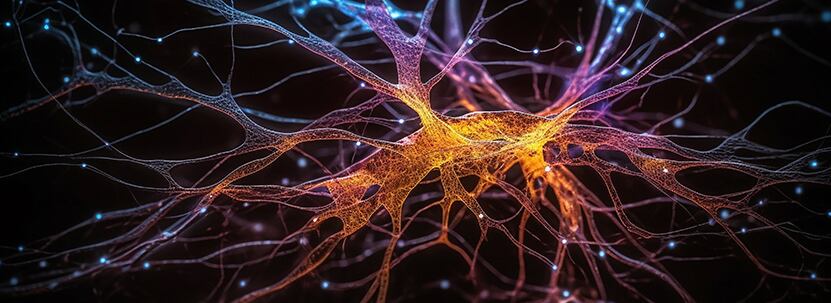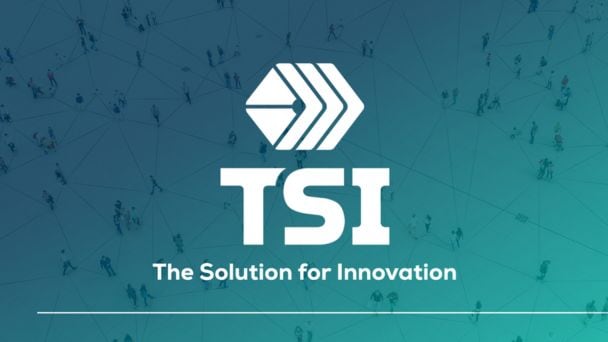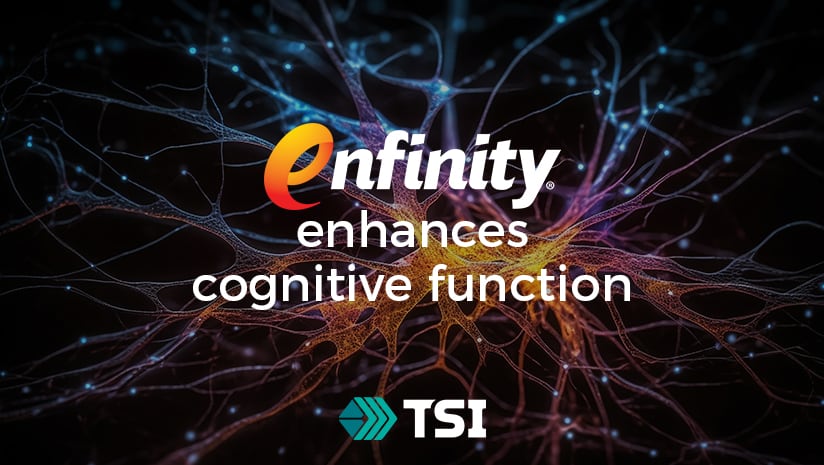Caffeine has been a cornerstone of human performance for centuries.
More than 90% of adults in North America consume it daily, seeking sharper focus, increased energy and enhanced productivity.¹⁻² Its popularity is supported by decades of research showing benefits across cognitive and physical domains. Yet not everyone experiences caffeine in the same way. For some, a morning coffee brings clarity, while for others it can cause restlessness, digestive discomfort or difficulty sleeping.¹⁻⁶
This variability is not due to caffeine’s shortcomings, but rather to how differently people metabolize it. Recent research has revealed that much of caffeine’s positive impact comes from one specific metabolite, paraxanthine. As the body’s primary breakdown product of caffeine, paraxanthine delivers most of caffeine’s benefits with a more consistent experience across individuals.⁶⁻⁹ Understanding its role offers an opportunity to refine how we harness one of the world’s most trusted stimulants.
After consumption, caffeine is metabolized almost entirely in the liver by the enzyme CYP1A2, which produces three main metabolites: paraxanthine (about 78%), theobromine (about 14%), and theophylline (about 8%).¹⁰⁻¹³ Each contributes differently to caffeine’s effects.
Paraxanthine acts as a potent central nervous system stimulant, promoting alertness and focus with generally fewer side effects.⁶⁻⁷,¹⁴ Theobromine and theophylline, while biologically active, are associated with effects such as elevated heart rate, tremors and gastrointestinal upset when accumulated at higher concentrations.¹,⁷,¹⁵⁻¹⁶ The proportion of these metabolites, and therefore the quality of one’s caffeine experience, depends largely on individual genetic differences.
Caffeine metabolism: A matter of individual biology
Variations in genes such as CYP1A2 and ADORA2A explain much of caffeine’s interindividual variability.⁴,¹⁶⁻¹⁸ CYP1A2 determines how quickly caffeine is cleared from the bloodstream, while ADORA2A influences sensitivity to adenosine receptor blockade in the brain.
- Fast metabolizers break down caffeine efficiently and often enjoy smooth stimulation and sustained focus.⁴,¹¹,¹⁶
- Slow metabolizers process caffeine more slowly, which can extend its activity and increase the likelihood of restlessness, crashes, jitters or sleep disruption.¹,⁶,⁷,¹⁰,¹¹,¹⁶

Roughly half of the population falls into each category.⁴,¹⁶⁻¹⁸ For slow metabolizers, small doses may linger for hours, while fast metabolizers may require multiple servings to maintain alertness. These differences highlight caffeine’s broad appeal but also its limitations as a one-size-fits-all solution.
Paraxanthine: The core of caffeine’s benefits
Because paraxanthine is the principal metabolite of caffeine, it represents the molecule most directly responsible for caffeine’s desirable effects. Directly providing paraxanthine bypasses the metabolic variability that makes caffeine’s response inconsistent from person to person.
Paraxanthine enhances performance through the same fundamental pathway as caffeine. It blocks adenosine A1 and A2A receptors, reducing fatigue and increasing wakefulness.⁷,¹³⁻¹⁴ However, studies show that it does so with slightly greater potency and fewer reports of overstimulation.¹⁰,¹⁵⁻¹⁶
Recent trials have demonstrated paraxanthine’s ability to improve executive function, decision-making, short-term memory and vigilance under both mental and physical fatigue.¹⁹⁻²⁰ In one study, participants who consumed paraxanthine exhibited greater improvements in psychomotor vigilance and fewer decision-making errors compared to caffeine users, both before and after running.¹⁹⁻²⁰

Paraxanthine mirrors caffeine’s impact on energy metabolism by increasing plasma epinephrine and free fatty acids, mechanisms linked to improved endurance and motivation.⁶,⁷,¹⁰ Importantly, it does so without elevating theobromine or theophylline levels, which are associated with many of caffeine’s less desirable effects. The result is a cleaner and steadier energy curve that sustains performance without excessive stimulation.
Paraxanthine offers a more genotype-independent experience. Its effects do not rely on CYP1A2 activity, meaning both fast and slow metabolizers can experience similar benefits. Clinical data shows it is well tolerated at effective doses and provides consistent cognitive and physical support.⁶⁻⁹,¹⁴,¹⁶ Paraxanthine represents an advancement within caffeine science, refining its performance potential through precision.
Looking ahead: From habit to optimization
Caffeine remains one of the most reliable and safe stimulants known. Its widespread use is a testament to its effectiveness in supporting alertness, endurance and productivity. The growing interest in paraxanthine reflects a scientific evolution. It is an effort to better understand and optimize the compound that underpins caffeine’s success.
As research into nutrigenomics and precision nutrition expands, paraxanthine demonstrates how innovation can build upon existing knowledge to offer more consistent, personalized solutions. Early findings also suggest additional benefits, including neuroprotective and anti-inflammatory properties, though more research is needed to confirm these mechanisms.⁷,⁹,¹⁴

For formulators, athletes and consumers, paraxanthine provides an opportunity to deliver caffeine’s hallmark benefits such as focus, energy and motivation, with greater predictability and balance. It represents a smarter evolution of stimulation, aligning with modern expectations for cleaner and more efficient performance ingredients.
Caffeine’s story is one of success and science. It has supported human focus and endurance for centuries, and its benefits remain unmatched in scale and familiarity. The discovery of paraxanthine’s role adds a new dimension to that story. As caffeine’s main metabolite, paraxanthine captures its core strengths of alertness, motivation and energy while reducing the variability driven by genetics and metabolism.
By embracing paraxanthine, researchers and industry can advance caffeine science toward a future defined by consistency, clarity and precision in both mental and physical performance.
References
- Cappelletti, S.; et al. Caffeine: Cognitive and Physical Performance Enhancer or Psychoactive Drug? Curr Neuropharmacol. 2015;13:71–88.
- Evans, J.; et al. Caffeine. StatPearls Publishing; 2021.
- Willson, C. The clinical toxicology of caffeine: A review and case study. Toxicol Rep. 2018;5:1140–52.
- Nehlig, A. Interindividual Differences in Caffeine Metabolism and Factors Driving Caffeine Consumption. Pharmacol Rev. 2018;70(2):384–411.
- Southward, K.; et al. The Role of Genetics in Moderating the Inter-Individual Differences in the Ergogenicity of Caffeine. Nutrients. 2018;10:1352.
- Benowitz, NL.; et al. Sympathomimetic effects of paraxanthine and caffeine in humans. Clin Pharmacol Ther. 1995;58:684–91.
- Orrú, M.; et al. Psychostimulant pharmacological profile of paraxanthine, the main metabolite of caffeine in humans. Neuropharmacology. 2013;67C:476–84.
- Guerreiro, S.; et al. Paraxanthine, the primary metabolite of caffeine, provides protection against dopaminergic cell death via stimulation of ryanodine receptor channels. Mol Pharmacol. 2008;74:980–9.
- Gressner, OA.; et al. Identification of paraxanthine as the most potent caffeine-derived inhibitor of connective tissue growth factor expression in liver parenchymal cells. Liver Int. 2009;29:886–97.
- Tang-Liu, DD.; et al. Disposition of caffeine and its metabolites in man. J Pharmacol Exp Ther. 1983;224:180–5.
- Thorn, CF.; et al. PharmGKB summary: caffeine pathway. Pharmacogenet Genomics. 2012;22:389–95.
- Rodopoulos, N.; et al. Assessment of dimethylxanthine formation from caffeine in healthy adults: comparison between plasma and saliva concentrations and urinary excretion of metabolites. Scand J Clin Lab Invest. 1996;56:259–68.
- Fisone, G.; et al. Caffeine as a psychomotor stimulant: mechanism of action. Cell Mol Life Sci CMLS. 2004;61:857–72.
- Okuro, M.; et al. Effects of Paraxanthine and Caffeine on Sleep, Locomotor Activity, and Body Temperature in Orexin/Ataxin-3 Transgenic Narcoleptic Mice. Sleep. 2010;33:930–42.
- Newhouse, MT. Is Theophylline Obsolete? CHEST. 1990;98:1–3.
- Baggott, MJ.; et al. Psychopharmacology of theobromine in healthy volunteers. Psychopharmacology (Berl). 2013;228:109–18.
- Langer, DJW. Genetics, metabolism and individual responses to caffeine. Coffee & Health. 2018.
- Cornelis, MC.; et al. Genome-wide meta-analysis identifies six novel loci associated with habitual coffee consumption. Mol Psychiatry. 2015;20(5):647–656.
- Xing, D.; et al. Paraxanthine provides greater improvement in cognitive function and psychomotor vigilance prior to and following running than caffeine. Presented at St. Pete, FL; 2021.
- Leonard, M., et al. Acute paraxanthine ingestion improves cognition, short-term memory and helps to sustain attention. Presented at St. Pete, FL; 2021.








